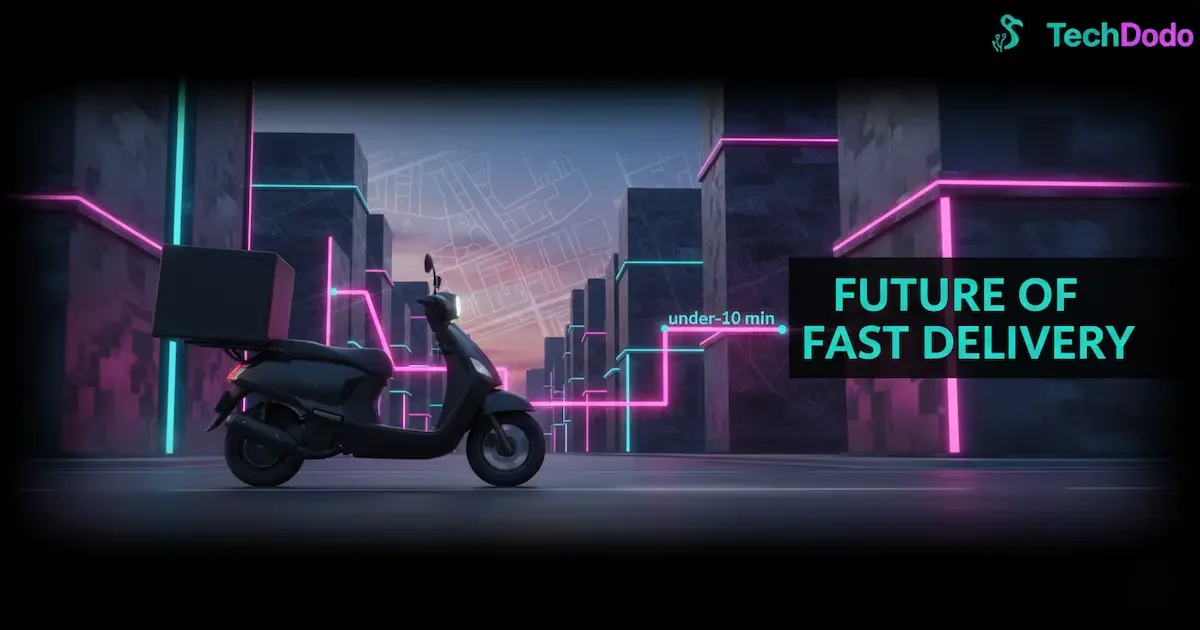Zepto’s $450M raise at ~$7B: India’s 10-minute race just found a new gear
If you thought the quick-commerce war was cooling, think again. Zepto has raised US$450 million, valuing the sub-10-minute delivery player at around US$7 billion. The round was led by CalPERS (the giant California public pension fund) with participation from existing backers like Goodwater Capital and Lightspeed, among others. Announced October 16, 2025 (IST), the fresh cash arms Zepto for an aggressive expansion across dark stores, categories, and cities.
What’s new—and what’s in the fine print
Most outlets peg the round at $450 million with a ~$7 billion valuation. A few reports mention $400 million, likely reflecting early or partial disclosures around primary vs. secondary components. Zepto and multiple tier-1 Indian media houses stated $450 million, with a majority in primary infusion. We’ll stick with that consensus while flagging the discrepancy.
Investor mix matters here. Alongside CalPERS, participation spans Goodwater, Lightspeed, General Catalyst, Avenir, Avra, Glade Brook, StepStone, and Nexus—a heavy-hitter roster signalling institutional confidence as Zepto inches toward an IPO. Reuters also notes Zepto’s India redomiciling earlier this year, a common pre-IPO housekeeping move for Indian tech unicorns.
Why it’s happening now
Three forces are powering India’s quick-commerce moment:
· Urban demand + smartphone saturation: A widening middle class that wants convenience—tonight.
· Dark-store density: Denser networks shave minutes and improve unit economics as order volumes climb.
· Category expansion: From milk and veggies to electronics and apparel (yes, really), the basket is getting bigger and margins less razor-thin.
Market estimates back the enthusiasm: India’s quick-commerce space was pegged around ₹640 billion in FY25 and could triple by 2028, according to CareEdge cited by Reuters. That’s a lot of 10-minute deliveries—and a lot of capital chasing them.
Where Zepto plays—and who it fights
Zepto is tussling with Zomato-owned Blinkit and Swiggy Instamart, with BigBasket’s BB Now also in the mix. The new money will reportedly fund “several hundred” more dark stores and push deeper category breadth over the next year. Expect faster service in Tier-1/2 clusters where density makes the maths work—and cautious expansion elsewhere.
The India lens: what changes for users and sellers
· Availability & assortment: More neighbourhood-level dark stores mean better in-stock rates beyond groceries—think OTC pharma basics, pet care, small appliances, and festival essentials.
· Faster ETAs at peak hours: Investment typically improves peak-time reliability (7–10pm), the Achilles’ heel for most players.
· Seller access: Brands chasing last-mile speed (from FMCG to D2C) get a wider shelf with sponsored placements and faster launch cycles.
· Festive playbook: Diwali-season bundles and flash deals will likely intensify as platforms throw capital at acquisition and frequency.
The tricky bits: costs, cash burn, and consolidation risk
Analysts are already warning that Zepto’s raise could re-ignite discounting and cash burn across the category as rivals match promos to preserve share. That’s great for consumers short-term, but could squeeze margins and delay profitability timelines. The industry has been through this loop before—remember Dunzo’s retrenchment. Expect sharper scrutiny on contribution margin, delivery-partner payouts, and fee experiments.
Strategy watch: levers Zepto is likely to pull
· Dark-store optimisation: Smaller footprints with high-velocity SKUs; better demand forecasting reduces wastage.
· Private labels & adjacencies: Own-brand essentials to lift margins; adjacent categories (electronics accessories, beauty) to raise AOV.
· Membership & bundles: Paid programs to lock in frequency, exchange higher LTV for steadier margins.
· Ad tech within the app: Retail media networks (sponsored product slots) to add a non-delivery revenue stream—already big in grocery e-commerce.
What experts disagree on (briefly)
· Unit economics vs. scale: Bulls argue density + AOV expansion can flip contribution margins positive; bears say ultra-fast SLAs inherently cap economics, especially with rising labor and lease costs.
· Path to IPO: Reuters and others suggest Zepto is preparing for a listing; skeptics point to prior delays in the sector amid profitability questions. Both can be true—macro and competition will decide cadence.
What this means for you
For urban Indian users, expect faster deliveries and broader SKUs in the next 6–12 months—often at promotional pricing. For brands, the retail-media + quick-commerce combo is now mainstream: plan for launch-day velocity, hyperlocal inventory, and measurable ad spend inside these apps. For the ecosystem, this round is a green light: quick-commerce isn’t a fad; it’s a format—albeit one that still needs disciplined execution to be sustainably profitable.
Risks and unknowns
· Profitability timeline: Not disclosed at this round; watch for contribution margin and store-level breakeven disclosures pre-IPO.
· Regulatory environment: Dark-store zoning and rider safety rules could tighten in dense cities.
· Capital cycles: If capital costs rise or public markets cool, expansion speed can slow quickly.
· Data points that vary: Some coverage quotes $400M instead of $450M; the weight of reporting supports $450M, but we note the inconsistency.
India’s 10-minute race isn’t over; it’s evolving. With $450M more in the tank and a ~$7B sticker price, Zepto has the runway to test whether density + broader baskets can make quick-commerce sustainably fast—and finally, sustainably profitable. We’ll update this piece if Zepto discloses primary/secondary splits or profitability milestones.
